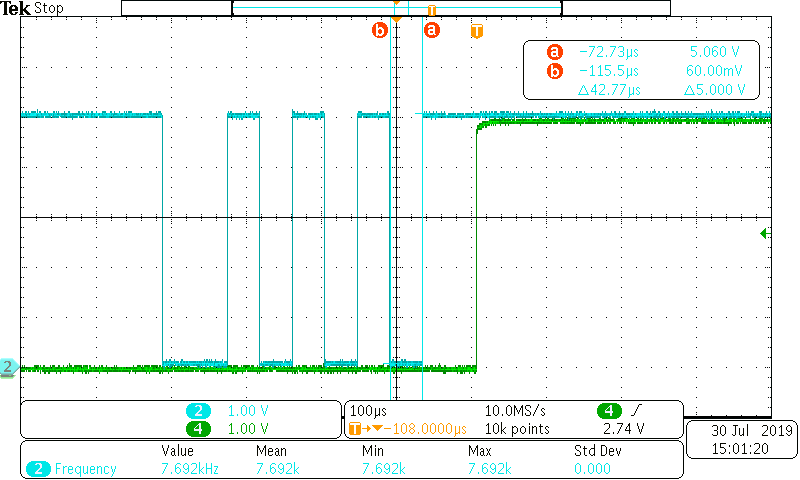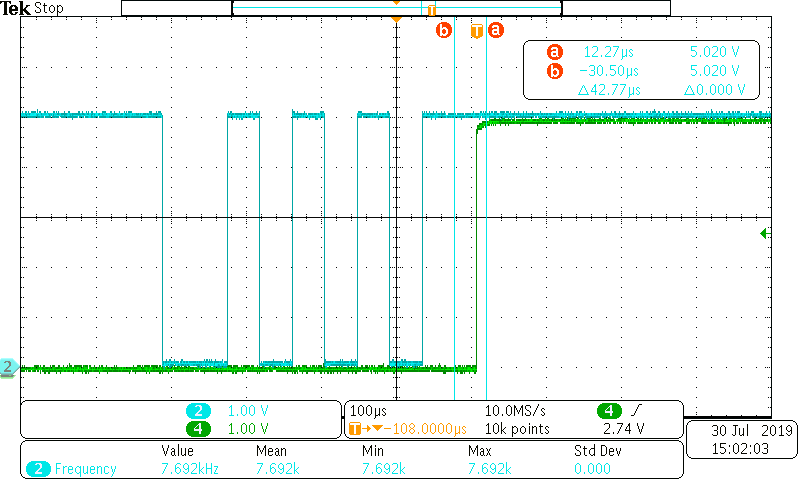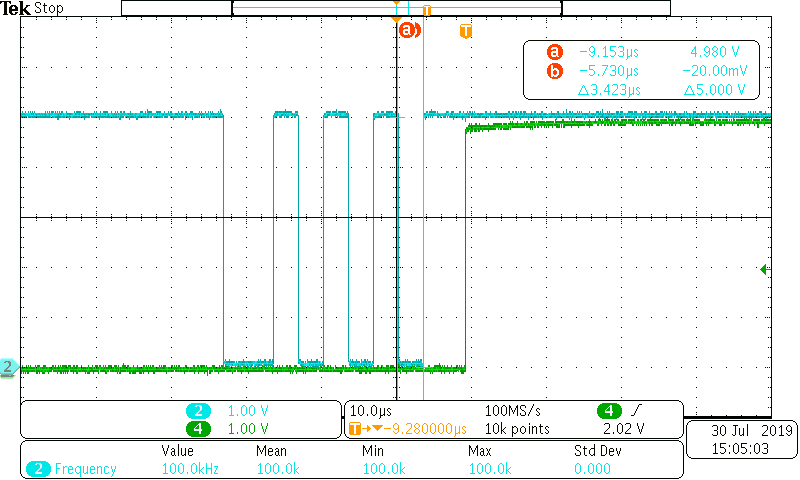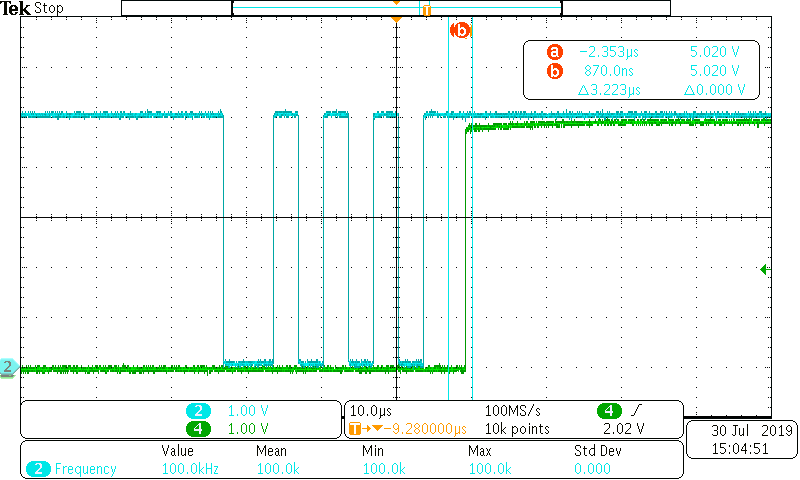Hello,
I have a question about the contents of the thread below.
https://e2e.ti.com/support/interface/f/138/p/542016/2247137
Please tell me about Delay from stop to interrupt.
・TL16C752B: 100[ns]
・TL16C752D: 1[baudrate]
I understand that this change is not a mistake but a correct change.
However, in the above thread, it ends with the content of confirming whether it is a mistake or not.
May I recognize that Delay from stop to interrupt of TL16C752D is 1[baudrate]?
Best Regards,
Kaede Kudo






